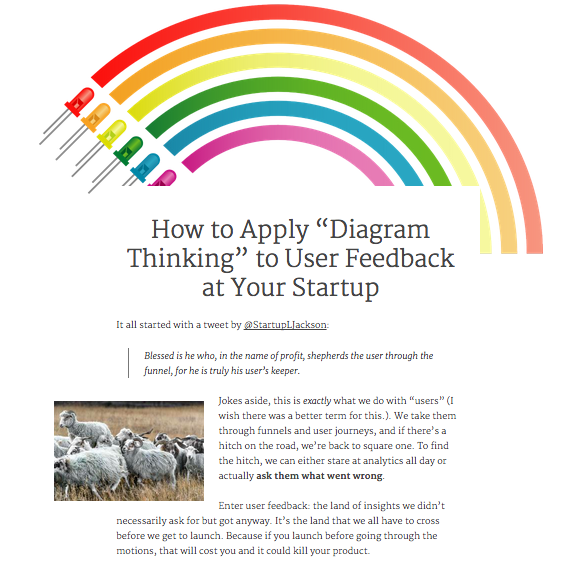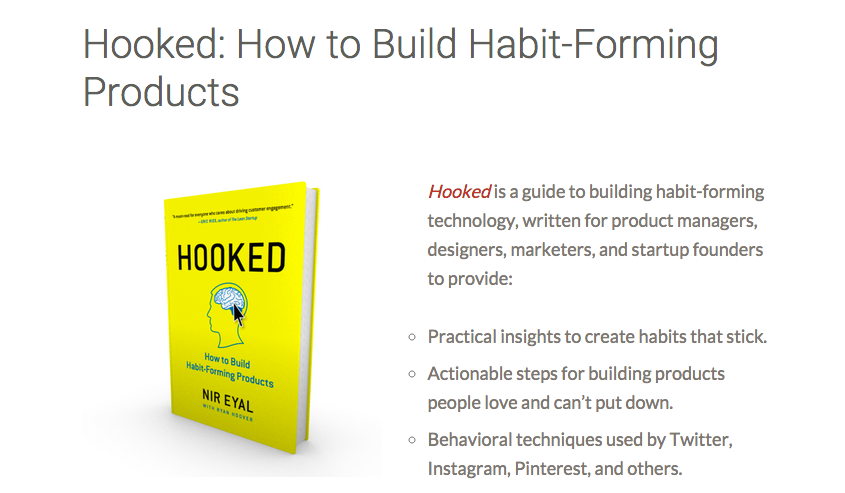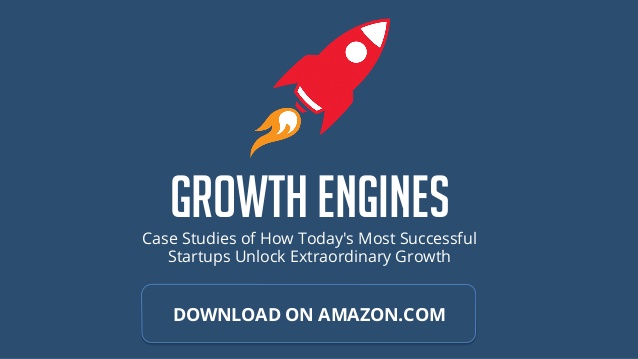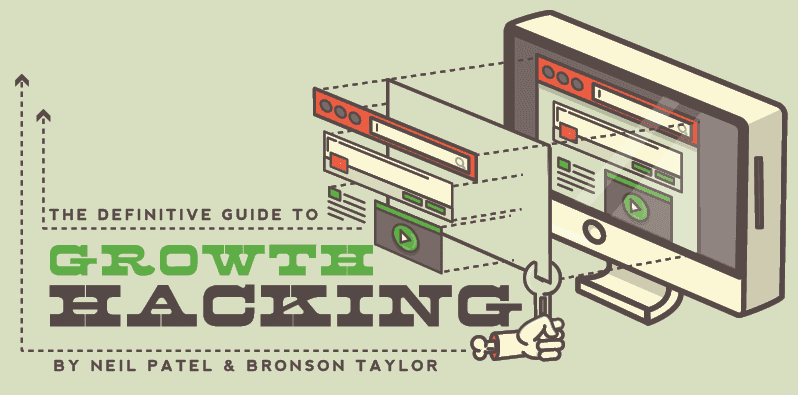This is a follow-up to an interview we published last week with Nichole Elizabeth DeMeré.
Nichole Elizabeth DeMeré leads community growth for Inbound.org and pitches in as a moderator at Growth Hackers and Product Hunt. In addition to taking time out from these demanding roles to answer our questions, she shared a slew of recommended apps, blogs, books, and communities that she’s found helpful when it comes to growing a community.
As she put it, “Here are some additional resources that I recommend for those who are interested in Community Management, Customer Success, and Growth Hacking (which are where my interests intersect).”
Apps and Services
Buffer
Buffer can help you with social media automation.
As the website describes, “[Y]ou can write a bunch of posts at one time, and choose which social profiles to send them to, and then Buffer will spread them out throughout the day or week so that you don’t have to be at a computer all the time in order to have a social media presence.”
Excel
Microsoft Excel is a tried-and-true tool for crunching numbers and analyzing data.
Google Docs
Google Docs provide a great way to keep track of hypotheses and experiments (and to share your thoughts and results with your team).
IFTTT
As the website puts it, “IFTTT empowers you with creative control over the products and apps you love.” DeMeré recommends using the tool for social media automation.
Import.io
Import.io allows you to “instantly turn web pages into data,” which DeMeré says comes in pretty handy for web scraping.
Intercom
Intercom is “customer communication made simple.”
MailChimp
MailChimp can help you with every aspect of email marketing.
Mixpanel
Mixpanel is a solid analytics tool, especially when it comes to event tracking and cohort analyses.
Optimizely
Optimizely makes it easy to implement A/B and multivariate testing, with the goal of helping you to “deliver your best customer experiences at every touchpoint on the web and mobile apps.”
Python
Python is a programming language that “lets you work quickly and integrate systems more effectively.”
Slack
One of the hottest new startups in town, Slack has quickly become the new go-to tool for team communication.
Trello
Trello is the self-described “free, flexible, and visual way to organize anything with anyone,” which explains why DeMeré recommends it for project management.
Unbounce
Unbounce allows marketers to “build, publish and A/B test landing pages without I.T.”
Zapier
Zapier “connects the web apps you use to easily move your data and automate tedious tasks.” And they’ve got a pretty stellar landing page, to boot.
Blogs
Jim Gray
As described in his Twitter bio, Jim Gray is a marketing engineer, data scientist, and “occasional UX plumber,” who also does product at Inbound.org.
He runs a blog/mailing list about “being a better marketer” including advice on finding great product ideas and putting growth hacking into context.
Lincoln Murphy
Lincoln Murphy, is the Managing Director of Sixteen Ventures, which provides marketing, customer acquisition, and churn reduction consulting for SaaS providers.
His blog, which dates back to 2006, offers advice on everything from metrics to marketing copy to pricing strategy, all geared towards helping SaaS companies grow their business.
Violeta Nedkova
Violeta Nedkova doesn’t like to be put in a box. But she says that currently she is “a writer, a marketer, and an entrepreneur (co-founded Amazemeet).”
As she put it, she “will publish two kinds of articles on this blog – the ones about things that are important to me and the ones that are, hopefully, helpful to you.”
As an example of what type of content that might include, her most recent post gave advice on “How to Apply ‘Diagram Thinking’ to User Feedback at Your Startup.”
Books
A Technique for Producing Ideas
A Technique for Producing Ideas was written by James Webb Young.
As described on Amazon, “This short but powerful book has helped thousands of writers, artists, scientists, and engineers to solve problems and generate ideas. Now let [his] unique insights help you be more creative in every area of life.”
Flow: The Psychology of Optimal Experience
Written by psychologist Mihaly Csikszentmihalyi, Flow: The Psychology of Optimal Experience “teaches how, by ordering the information that enters our consciousness, we can discover true happiness and greatly improve the quality of our lives.”
Influence
Influence is considered the “classic book on persuasion.” In it, Dr. Robert Cialdini “explains the psychology of why people say ‘yes’—and how to apply these understandings.”
Grouped
Grouped: How small groups of friends are the key to influence on the social web was written by Paul Adams.
“This book pulls together the latest research from leading universities and technology companies to describe how people are connected, and how ideas and brand messages spread through social networks. It shows readers how to rebuild their business around social behavior, and create products that people tell their friends about.”
Hooked: How to Build Habit-Forming Products
In his book, Nir Eyal explains “the Hook Model — a four-step process embedded into the products of many successful companies to subtly encourage customer behavior. Through consecutive ‘hook cycles,’ these products reach their ultimate goal of bringing users back again and again without depending on costly advertising or aggressive messaging.”
Lean Analytics
“Whether you’re a startup founder trying to disrupt an industry, or an intrapreneur trying to provoke change from within, your biggest risk is building something nobody wants.”
Lean Analytics: Use Data to Build a Better Startup Faster, written by Alistair Croll, can help you to mitigate that risk. “By measuring and analyzing as you grow, you can validate whether a problem is real, find the right customers, and decide what to build, how to monetize it, and how to spread the word.”
Positioning: The Battle for Your Mind
Written by advertising gurus Al Ries and Jack Trout, Positioning: The Battle for Your Mind “describes a revolutionary approach to creating a ‘position’ in a prospective customer’s mind – one that reflects a company’s own strengths and weaknesses as well as those of its competitors.”
Scarcity: Why Having Too Little Means So Much
In Scarcity: Why Having Too Little Means So Much, authors Sendhil Mullainathan and Eldar Shafir “show that scarcity creates a distinct psychology for everyone struggling to manage with less than they need.”
Startup Growth Engines
Startup Growth Engines: Case Studies of How Today’s Most Successful Startups Unlock Extraordinary Growth was written by Sean Ellis, who coined the term “growth hacker” and cofounded the Growth Hackers community, and Morgan Brown, who leads growth for the community.
Startup Owners Manual
Written by Steve Blank and Bob Dorf, The Startup Owner’s Manual “guides you, step-by-step, as you put the Customer Development process to work. This method was created by … Blank, acknowledged catalyst of the “Lean Startup” movement, and tested and refined by him for more than a decade.”
The Definitive Guide To Growth Hacking
According to authors Neil Patel and Bronson Tayler, The Definitive Guide to Growth Hacking “is for entrepreneurs, founders, growth leads, or anyone else who is trying to grow a startup. If acquiring new customers (and retaining existing ones) is important to your business then you should read this guide. If customers matter to you, then growth hacking should matter to you.”
Waiting for Your Cat to Bark?
In this book, authors Bryan and Jeffrey Eisenberg start from “the premise that customers have always behaved more like cats than Pavlov’s dogs.”
Waiting for Your Cat to Bark?: Persuading Customers When They Ignore Marketing “provides business with a proven context for rethinking customers and retooling marketers in a rewired market.”
Web Analytics 2.0
Written by thought leader Avinash Kaushik, Web Analytics 2.0: The Art of Online Accountability and Science of Customer Centricity “presents a new framework that will permanently change how you think about analytics.”
As described on Amazon, “The book will help your organization become more data driven while you become a super analysis ninja!”
Communities
DataTau
DataTau has been described as a “Hacker News for data scientists.”
This online community was founded in 2013 by Rohit Sivaprasad, who was a grad student at North Carolina State University at the time. As Sivaprasad told Venture Beat at the time: “I want people — if they work on something cool in data science, I want them to post it there.”
DataIsBeautiful
DataIsBeautiful is a community on reddit.
As the site describes, “[It’s] a place for visual representations of data: Graphs, charts, maps, etc. DataIsBeautiful is for visualizations that effectively convey information. Aesthetics are an important part of information visualization, but pretty pictures are not the aim of this subreddit.”
Bonus: If you are a data visualization practitioner or researcher, you can apply for “special DataIsBeautiful flair” (which naturally made me think of Jennifer Aniston’s character on Office Space).
Image credits for Office Space, featured image of tools













